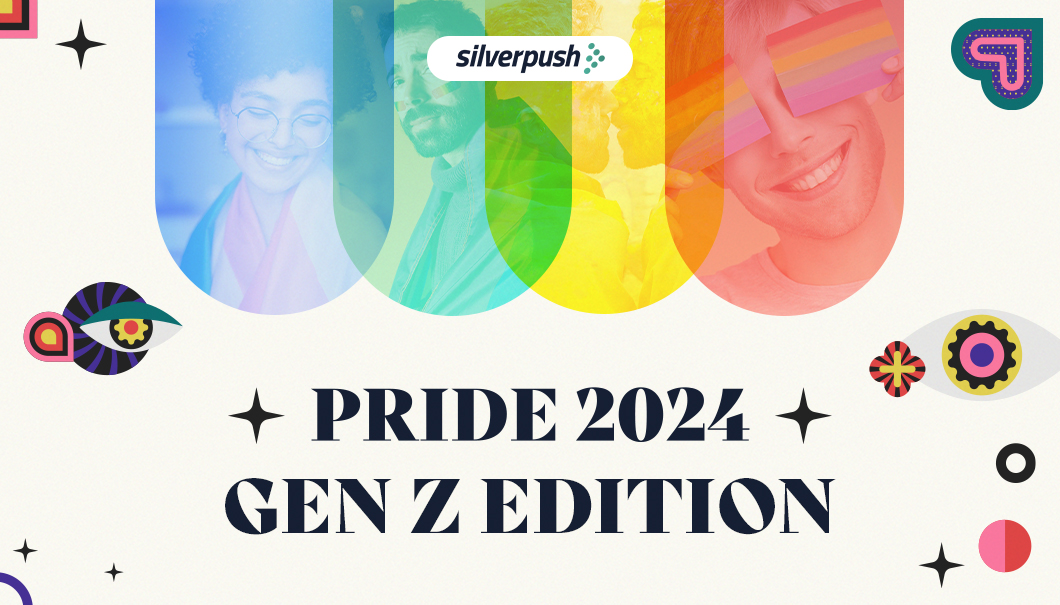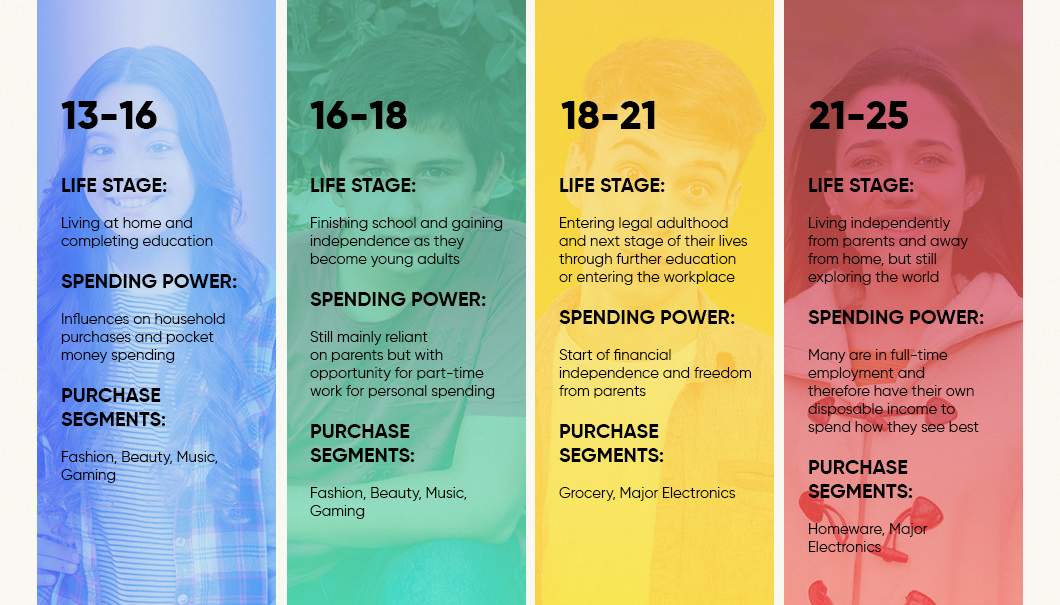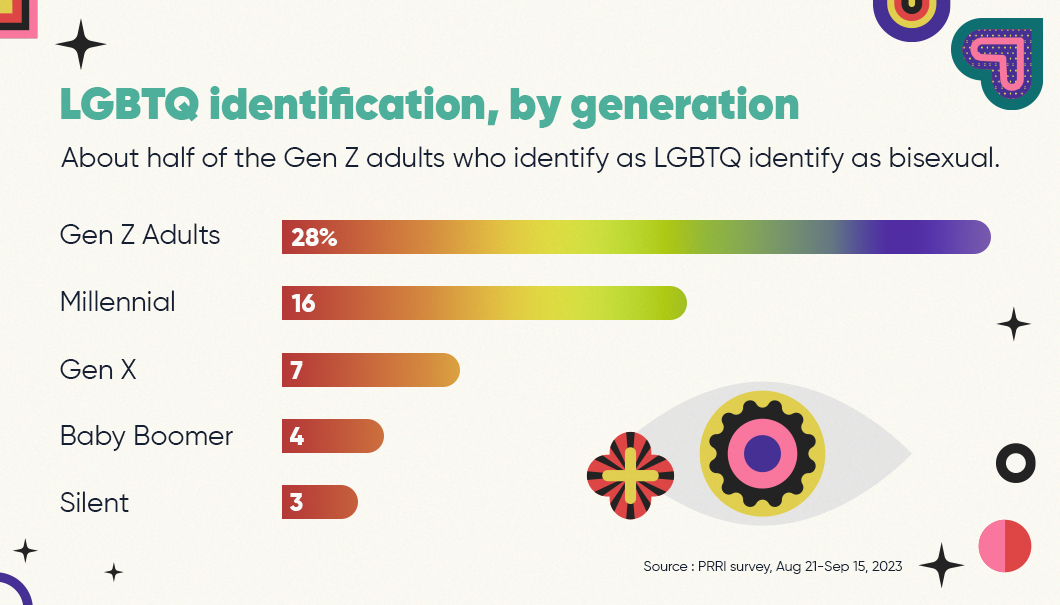Pride 2024: Gen Z Edition | 08 May, 2024

Pride holds profound significance for young people, regardless of their LGBTQ+ status. It transcends mere symbolism, embodying a celebration of inclusivity and love. However, Gen Z is increasingly scrutinizing the authenticity behind corporate support during Pride. A superficial display, such as a rainbow logo, no longer suffices to demonstrate alignment with their values. Discover how your brand can genuinely participate in the celebration of Pride month without resorting to tokenism.
Gen Z and Pride: What it Means to Them?
Gen Z, the approximately 67 million teens and young adults born after 1996 is steadily gaining prominence across social, political, technological, and cultural landscapes. With their increasing eligibility to vote, emergence as heads of households and primary decision-makers, and recognition of the power they hold through digital platforms, particularly social media, GenZ is asserting its influence in multifaceted ways.

Regardless of their own personal sexual orientation, Gen Z overwhelmingly stands as allies to the LGBTQIA+ community, with only 18% holding the belief that homosexuality is “wrong.” Moreover, a greater portion of Gen Zers (37%) acknowledge that gender exists on a spectrum compared to those who adhere to the binary concept of gender (31%).
Given the fluidity and openness surrounding sexual and gender identities within this generation, brands face the challenge of breaking corporate norms to authentically connect with LGBTQIA+ Gen Zers and their allies. For instance, research by Horowitz reveals that 23% of Gen Zers prefer to be asked their preferred pronouns rather than having their gender assumed. This indicates a need for brands to reconsider how they address gender and identity in their messaging and creative offerings, especially on social media platforms.
Additionally, McKinsey’s research highlights that 70% of Gen Z consumers actively seek out ethical brands. Mere symbolic gestures, such as posting graphics on Instagram, no longer suffice. Gen Z demands tangible information and concrete actions to substantiate brands’ ethical claims.
Where Should Brands Be Talking?
GenZ isn’t just using YouTube for the videos; they’re actively engaging with the ads as well. According to research by Precise TV and Giraffe Insights, six in 10 teens opt to watch YouTube ads rather than skipping them, with almost half able to recall ads they’ve seen on the platform.
Why we care. This data underscores the importance of brands seeking to connect with Gen Z to reevaluate their advertising strategies. Shifting ad spending from traditional TV to YouTube could yield stronger engagement, recall, and influence on purchase decisions.

Our take: In response to evolving consumer identities, it’s crucial for the marketing and advertising industry to prioritize inclusivity and diversity. Beyond being the most racially and ethnically diverse American generation ever, over 1 in 4 (28%) Gen Zers self-identify as LGBTQIA+.
How can Brand Connect with Gen Z?
GenZ values brands that prioritize personalization and individualization, seeking tailored products and services along with personalized brand communications. A significant 38% of Gen Z prefers personalized ads, nearly double the preference of Millennials, driven partly by the desire to explore new brands and products.
Hyper-contextual and creative intelligence solutions offer advertisers a streamlined path to connect with their target audience. Contextual intelligence, powered by AI, delves deep into video content to pinpoint highly relevant contexts aligning with brand objectives. Advertisers can further fine-tune campaigns with custom inclusion and exclusion themes to ensure ads appear in appropriate contexts.
To engage Gen Z effectively, innovative approaches are vital. With consumers’ increasingly short attention spans, turning them from passive observers into active participants boosts engagement, consideration, and purchase intent. Among various creative intelligence solutions, interactive video ads shine. These innovative AI solutions enhance existing brand videos with interactive layers, allowing consumers to engage directly with the content.
Conclusion
In conclusion, as Gen Z trends continue to shape the cultural landscape and assert their influence across various spheres, brands must adapt and evolve to authentically connect with this dynamic generation. By prioritizing inclusivity, diversity, and ethical practices, and leveraging innovative marketing strategies tailored to Gen Z’s and Pride preferences, brands can forge meaningful connections and thrive in an ever-changing marketplace.
For AI-driven, Gen Z-focused advertising solutions, reach out to Silverpush.

BLOGS
Partner Spotlight: Alice Ovadia, VP of Media Strategy
Silverpush is excited to highlight TRUth for our Partner Spotlight this week. We caught up with Alice Ovadia, VP of Media Strategy at TRUth, to learn more about the agency and talked to her about her big predictions for the ad market in the coming years. Here’s what Alice said. 1. ...

BLOGS
Why Granular Insights Are Critical for Ad Campaign Optimization
When your ad campaign ends and the dashboard lights up with a “great” VTR or a CTR that’s above average, you celebrate, right? But then comes the pause. What actually made it work? Was it the creative? The audience? The time of day? The context of the video? Most platforms ...

BLOGS
YouTube CTV Advertising: Bigger Screens, Bigger Impact
YouTube has always been a powerhouse for brands looking to connect with audiences. With over 2 billion monthly active users, it’s a platform that reaches people everywhere, on their phones, tablets, and laptops. However, the way people watch YouTube today is very different from how it used to be in the ...







